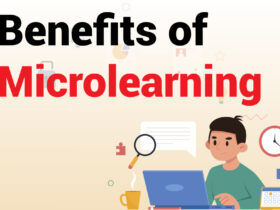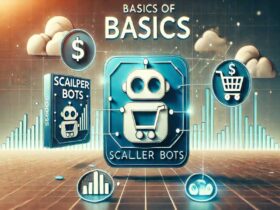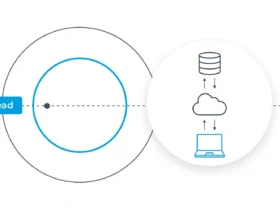Educational technology assessment tools are software or resources used to evaluate educational outcomes. They help teachers measure student learning and instructional effectiveness.
Incorporating a variety of assessment tools into the educational landscape, educators can track student progress, identify areas for improvement, and tailor teaching strategies accordingly. Engaging and interactive, these tools often offer an accommodating blend of quizzes, interactive assignments, and real-time feedback mechanisms.
They bridge traditional assessment means with modern technology, facilitating data-driven decisions in the classroom. Designed to integrate seamlessly into various learning management systems (LMS), these tools support both formative and summative assessments. Their adaptability ensures they can cater to diverse educational settings, making them indispensable in today’s digitally-enhanced teaching environments.
Credit: www.watermarkinsights.com
Educational Technology Assessment Tools Unpacked
Welcome to the world of educational technology assessment tools. These tools are changing how teachers measure student success. But what are they exactly? Let’s unpack these high-tech helpers and see how they can make learning and assessment better for everyone.
Defining Tech-based Assessments
Tech-based assessments use technology to evaluate student learning. They are different from traditional paper tests. With computers and software, they make grading fairer and quicker. These can happen in class or online, giving instant feedback to students and teachers. Kids get to understand their strengths and weaknesses faster.
Types And Examples Of Assessment Tools
There are many types of tech assessment tools. Some help with quizzes while others check how well students do a task.
| Assessment Type | Examples |
|---|---|
| Quizzes & Tests | Kahoot!, Quizizz |
| Interactive Tasks | Seesaw, Flipgrid |
| Portfolios | Google Classroom, Edublogs |
| Game-Based Learning | Minecraft Education, Socrative |
- Quizzes are fun with tools like Kahoot! Kids answer on their devices and see scores in real-time.
- Interactive tasks let kids show what they know by making videos or slideshows. Tools like Flipgrid make this easy.
- With portfolios, students collect their work all year. This can be shared with parents easily.
- Game-based tools turn learning into a game. This way, reviewing for tests becomes exciting and enjoyable.
These tools work on different devices like tablets, laptops, and smartphones. This makes it simple for all students to join in and learn in the way that is best for them.
The Role Of Technology In Modern Education
Imagine classrooms filled with engaged students. They are all using laptops, tablets, or interactive boards. Every tool they use is part of a larger network. This network aims to make learning easier, better, and more fun. This is today’s reality. Technology plays a key role in modern education.
Enhancing Learning Outcomes
Technology makes learning more interactive and collaborative. Instead of reading from textbooks, students can now watch engaging videos. These explain complex topics in a visual format.
- Interactive quizzes test students’ knowledge in a playful manner.
- Digital portfolios track and showcase their progress.
- Software tools adapt to each student’s learning pace. This personalizes education.
These tools provide immediate feedback. Both teachers and students can see which areas need more attention.
Benefits For Teachers And Students
| Teachers | Students |
|---|---|
| Less time grading, more time teaching. | Engage in lessons tailored to their style. |
| Access to diverse teaching resources. | Learn at their own speed. |
| Create interactive lessons quickly. | Games and simulations make learning exciting. |
Teachers use these tools to manage classrooms effectively. Students benefit from a learning process that fits their needs. Everyone wins.
Choosing The Right Assessment Tools
The process of choosing the right educational technology assessment tools can be daunting. Tailoring tools to the needs of both educators and students is essential. Tools should enhance learning while providing accurate measures of student understanding. Now, let’s explore the crucial steps for selecting the ideal assessment tools for educational purposes.
Key Features To Consider
When it comes to educational technology assessment tools, key features determine their effectiveness. Consider the following aspects:
- User-Friendly Interface: The tool must be easy for both teachers and students to use.
- Accessibility: Ensure the tool is accessible on multiple devices and platforms.
- Data Analysis: Look for tools that provide insightful data analytics for tracking progress.
- Feedback Mechanisms: Immediate and constructive feedback aid students in learning.
- Customizability: Adapt the tool to fit various subject matter and learning styles.
- Security: Student data protection is a priority. The tool must comply with privacy laws.
These features contribute to an effective and engaging learning experience.
Matching Tools To Learning Objectives
Aligning assessment tools with learning objectives is crucial. Below are steps to ensure a perfect match:
- Define Goals: Clearly outline what students should accomplish.
- Analyze Requirements: Identify the tool’s capabilities that align with these goals.
- Explore Options: Research and compare various tools. Select one that aligns best with your objectives.
- Test and Evaluate: Pilot the tool and gather feedback to ascertain its effectiveness.
The right match boosts learning outcomes and improves the overall educational process.

Credit: www.synthesia.io
Integrating Tools Into The Classroom
Educational Technology Assessment Tools revolutionize learning. They make classes interactive and fun. Teachers can track progress easily. But how can schools seamlessly blend these tools into daily teaching? Let’s explore.
Steps For Implementation
Effective implementation begins with clear planning. Here’s how to get started:
- Research and Select: Choose tools that fit your curriculum goals.
- Training: Provide workshops for teachers.
- Small-Scale Testing: Pilot the tools in select classes.
- Feedback Loops: Gather teacher and student feedback.
- Full Rollout: Implement tools school-wide after successful testing.
- Continuous Support: Offer ongoing technical support and training.
Overcoming Challenges And Resistance
Resistance to new tools is common. Here’s how you can overcome it:
- Show Benefits: Demonstrate how tools enhance learning.
- Be Patient: Allow time for adjustment.
- Encourage Exploration: Let teachers experiment with tools.
- Address Concerns: Create a platform for discussion.
- Highlight Success Stories: Share positive outcomes from early adopters.
Measuring Success And Roi
Understanding the impact of educational technology on teaching and learning is essential. Schools invest in various technological tools to enhance the educational experience. Yet, knowing whether these investments yield a decent return on investment (ROI) is crucial. Measuring success goes beyond anecdotal evidence. It involves tangible evidence of student progress and efficiency gains. That’s where educational technology assessment tools come into play.
Evaluating Student Performance
Educational technology assessment tools offer unparalleled benefits. Detailed evaluations of student performance are now possible. Teachers can tailor instruction to individual student needs. Classroom technologies like e-learning platforms and learning management systems (LMS) help track student progress.
- Interactive quizzes: Provide immediate feedback
- Integrated analytics: Highlight strengths and weaknesses
- Collaborative projects: Develop critical thinking and problem-solving skills
These features ensure a customized learning journey, providing insights into each student’s development.
Analyzing Data For Continuous Improvement
Data is a goldmine for continuous improvement in education. With the proper tools, educators can unlock the full potential of data analysis. Assessment tools with analytics offer a deeper look at educational outcomes. This leads to informed decision-making.
Educational data analysis can reveal:
| Trends | Gaps | Opportunities |
|---|---|---|
| Understand shifts in learning | Identify areas needing support | Uncover areas to enhance learning |
Data-driven strategies can be formulated to uplift teaching quality and student outcomes. Thus, ensuring a better ROI for educational technology investments.
Looking Ahead: The Future Of Edtech Assessments
The landscape of educational technology is rapidly evolving. With each leap in innovation, educators receive new tools. These tools shape how they gauge student understanding and progress. It’s crucial to stay informed about the future of EdTech assessments.
Assessment tools are changing. They adapt to different learning styles and environments. The focus is on enhancing interaction and engagement. This shift will affect how educators plan courses and support students.
Emerging Trends And Innovations
Novel EdTech solutions emerge constantly. They aim to provide deeper insights into student learning. Here are current trends:
- Artificial Intelligence (AI): AI drives personalized learning. It adjusts content difficulty based on student performance.
- Game-based assessments: These turn exams into interactive experiences. They can boost motivation and engagement.
- Data analytics: This tracks student interactions with material. Educators use this data to adapt their teaching methods.
- Virtual Reality (VR) and Augmented Reality (AR): They create immersive environments. These environments are perfect for practical assessments.
Preparing For Changes In Educational Paradigms
The evolution of EdTech is reshaping education. To prepare for these shifts:
- Teachers may need training in new technologies.
- Curricula have to be designed with flexibility in mind.
- Students should develop digital literacy.
- Assessment strategies should be continuously reviewed.
These steps ensure a seamless transition into future paradigms. They emphasize adaptability and readiness.
As we prepare for the future, collaboration among educators becomes vital. Sharing best practices helps harness the full potential of EdTech tools.

Credit: www.covidence.org
Frequently Asked Questions For What Are Educational Technology Assessment Tools
What Are Edtech Assessment Tools?
Educational Technology Assessment Tools, or EdTech tools, are digital platforms or software. They help educators evaluate, measure, and improve student learning. They range from online quizzes to educational apps.
How Do Assessment Tools Enhance Learning?
Assessment tools enhance learning by providing immediate feedback. They adapt to student responses, track progress over time, and support personalized education paths. This ensures educational experiences are more engaging and effective.
Can Assessment Tools Help With Remote Education?
Yes, assessment tools are vital for remote education. They enable teachers to administer tests online, track student progress, and provide feedback from any location. This helps maintain educational continuity outside traditional classrooms.
What Types Of Edtech Tools Are Popular?
Popular types of EdTech tools include learning management systems (LMS), gamified learning apps, and AI-powered adaptive learning platforms. These tools are known for improving student engagement and facilitating personalized learning experiences.
Conclusion
Navigating the landscape of educational technology assessment tools can be daunting. Yet, with the right ones in hand, educators can unlock vast opportunities for student growth. Our journey through the various options shows their critical role in modern classrooms. Embrace these tools, enhance learning, and shape the educational prospects of tomorrow.








































Leave a Reply